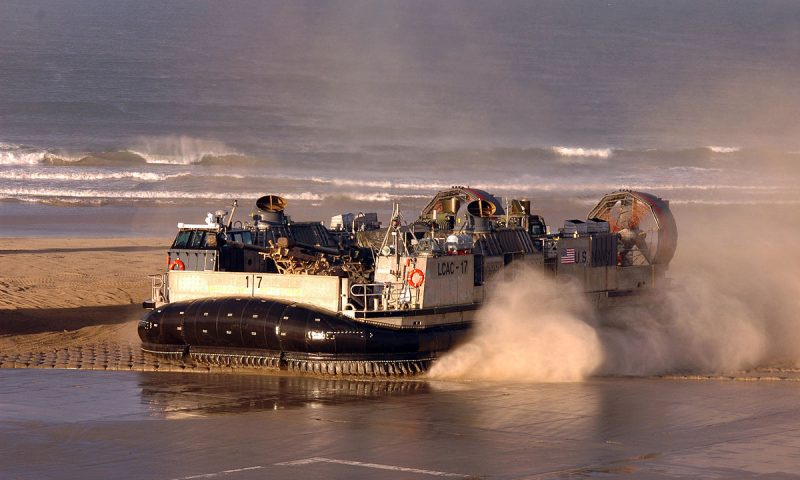The United States Navy has nearly finished construction of its first two recent, high-tech ship-to-shore connectors for maritime operations designed to move greater numbers of Marines, weapons, and equipment to shore from over the horizon.
“The service intends to make 73 Ship-to-Shore Connectors, or SSCs, to replace the current fleet of 72 Landing Craft Air Cushions or LCACs,” said Maj. Gen. Christopher Owens, Navy Director of Expeditionary Warfare.
“With some of the current fleet of LCACs nearing 30-years of service, the Navy needs to start replacing them with newer models,” said service officials.
“The Navy has two SSCs under construction for delivery next year and an additional two that started construction this year. That is an upgrade to the current LCAC,” he said earlier this year.
“The SSC design will be very similar to an LCAC, but the new craft will have a number of modifications and improvements which will provide greater speed and range, larger payload capacity, better digital controls and a new engine,” Owens added.
“With a bigger load capacity, the Navy can resume carrying M1A1 battle tanks on them. TAhe SSCs will have new engines – identical to the one used now in the MV-22 Osprey tilt-rotor aircraft,” he explained.
“The new SSCs also feature a strengthened deck and improved propellers when compared with current LCACs,” he said. The new SSCs can transport up to 74-tons across the ocean, enough to transport an M1A1 Abrams tank with a plow that will clear a path through minefields.
“The Navy’s 72 LCACs, in service since the 80s, can move up to 60-tons, have speeds of up to 36-knots and travel up to 200 nautical miles from amphibious vehicles,” Navy officials explained.
The new SSCs will be able, like the LCACs, to have access to over 70 percent of the world’ shorelines as well.
Textron Systems was contracted to build an in-house Navy design for the SSCs via an initial construction deal to supply up to eight new craft in four years. The contract has a possible value of just over $500 million.
Designed with manoeuvrability and over-the-horizon high-speed in mind, LCACs can travel substantial distances and land on rocky terrain with the capability of driving right up onto the shore.
To fill the gap from current LCACs to the new SSCs, the Navy started an exclusive service life extension program for the LCACs. Many of are now nearing three decades of service.
The LCACs were re-equipped with new engines, provided with new rotating machinery, new command and control systems, and new skirts and fixes to corrosion problems. The improvements are designed to add another ten years of life back into the LCAC, explained Navy officials.
The objective with the service life extension is to link the gap or time-lapse until the new SSCs are ready to enter the force in greater numbers, Owens explained.
Some of the improvements being engineered into the SSCs are designed to tackle the changing threat landscape in a modern environment, a situation that is expected to modify how amphibious operations are conducted in the future.
Since potential enemies now have weapons with greater range, improved sensors and targeting systems and computers with quicker processing speeds, amphibious forces approaching the shore may need to scatter, so enemy forces face greater difficulty targeting them.
This situation, wherein possible enemies possess advanced weaponry designed to make it difficult for American forces to operate in specific areas such as close to shore, is termed “anti-access/area-denial” by Pentagon analysts.
“One way of dealing with that type of threat is to have a diffused threat deployed that is able to quickly solidify and then quickly move from ship to shore,” Owens explained.
